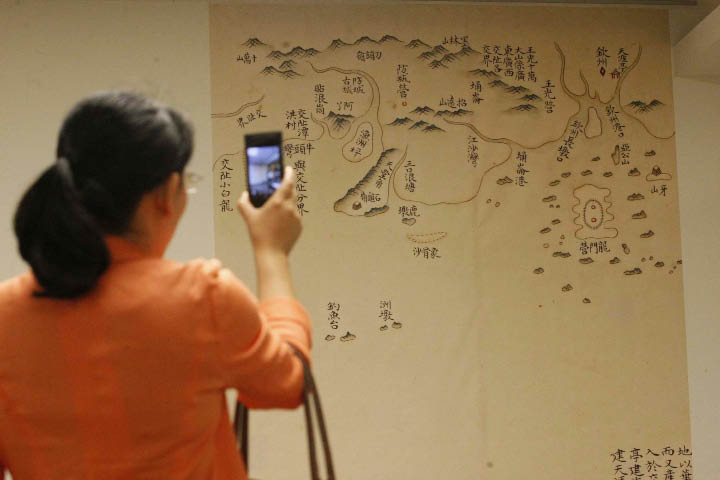Japan’s Unilateral Change of the Diaoyu Islands Status Quo Challenges Post-war International Order
By HUO JIANGANG
HISTORICAL records indisputably prove that the Diaoyu Islands are Chinese territory. The archipelago is first mentioned in the book Voyage with a Tail Wind published in 1403, the first year of the reign of Ming Dynasty Emperor Yongle, which refers to the “Diaoyu Islets.” Chinese historical records and maps thereafter, such as the book The Mission to Ryukyu of 1534 (the 13th year of the reign of Ming Emperor Jiajing), by Chen Kan, an imperial title-conferring envoy, and An Illustrated Compendium on Maritime Security (Chou Hai Tu Bian), compiled by Zheng Ruozeng under the auspices of Hu Zongxian, the supreme commander of the southeast coastal defense of the Ming court, make similar mention of the Diaoyu Islets. The claim that the Diaoyu Islands are “terra nullius,” therefore, is totally untenable, and Japan’s purchase of the Diaoyu Islands is hence illegal.
 |
|
A Qing Dynasty book documenting a Chinese diplomat’s inspection of the Diaoyu Islands over two centuries ago, on display at the Poly Art Museum last September. CFP |
The Diaoyu Islands were ceded to Japan as part of Formosa (Taiwan) Island under the unequal Treaty of Shimonoseki of 1895. Japan occupied the Diaoyu Islands until 1945, upon its announcement of unconditional surrender at the end of World War II.
In December of 1943, leaders of the U.S., the U.K. and China co-issued the Cairo Declaration, which stipulated, “All territories Japan stole from the Chinese, such as Manchuria, Formosa and the Pescadores, shall be restored to the Republic of China.” In 1945, the U.S., the U.K. and China issued the Potsdam Proclamation. Article Eight states: “The terms of the Cairo Declaration shall be carried out and Japanese sovereignty shall be limited to the Islands of Honshu, Hokkaido, Kyushu, Shikoku and such minor islands as we determine.” On August 15 of 1945, Japan accepted all of the demands contained in the Potsdam Proclamation and announced its unconditional surrender, so signifying unconditional relinquishment of its rule of Taiwan and nearby islands, including the Diaoyu Islands. The Potsdam Proclamation and the Cairo Declaration are international documents acknowledged and accepted by Japan. China’s sovereignty over the Diaoyu Islands, therefore, is unquestionable.
On September 8 of 1951, Japan, the U.S. and certain other countries signed the Peace Treaty of San Francisco. Victorious nations such as China and the USSR, however, were not signatories to the document. The treaty placed Nansei Shoto south of 29 degrees North Latitude (including the Ryukyu Islands and the Daito Islands) under the trusteeship of the U.S. On December 25 of 1953, the United States Civil Administration of the Ryukyu Islands issued Proclamation No. 27 defining the geographical boundary lines of the Ryukyu Islands to include the islands, islets, atolls, and rocks in the area bounded by the coordinates of 24 degrees North Latitude and 122 degrees East Longitude. The area stipulated in the proclamation included the Chinese territory of the Diaoyu Islands. On June 17 of 1971, Japan and the U.S. signed the Okinawa Reversion Agreement, which provided that all powers of administration over the Ryukyu Islands, including the Diaoyu Islands, should revert to Japan. The Japanese government now cites backroom deals as basis for its claim of sovereignty over the Diaoyu Islands, a move that infringes the Potsdam Proclamation and the Cairo Declaration. Japan thus not only openly refutes historical facts, jurisprudential evidence and the fruits of the anti-fascist war, but also directly challenges post-World-War-II order.

